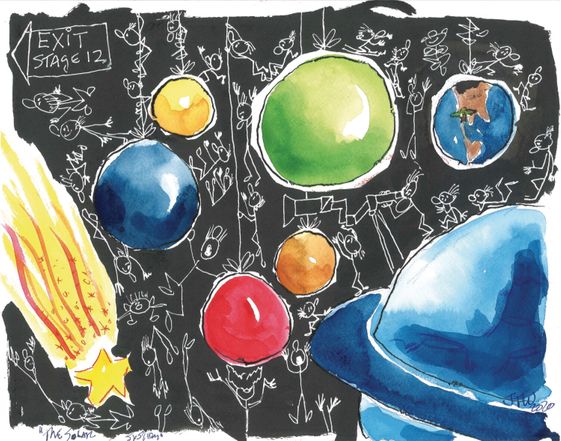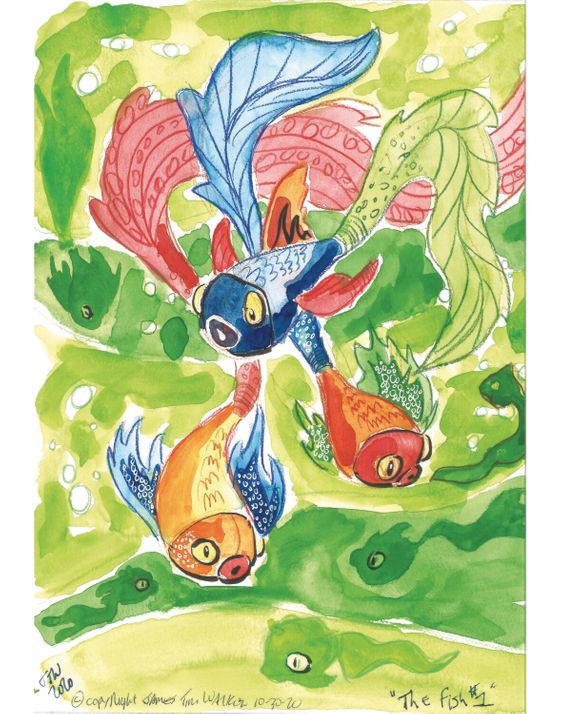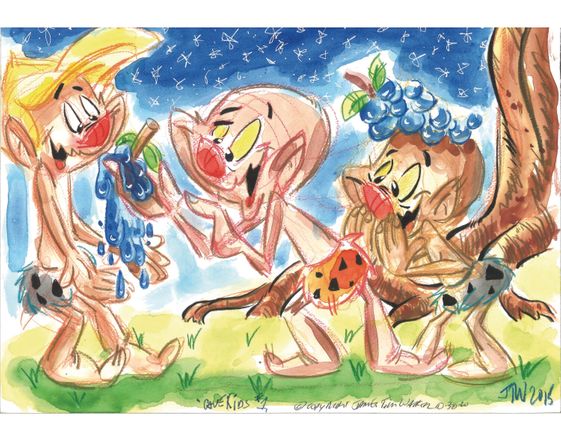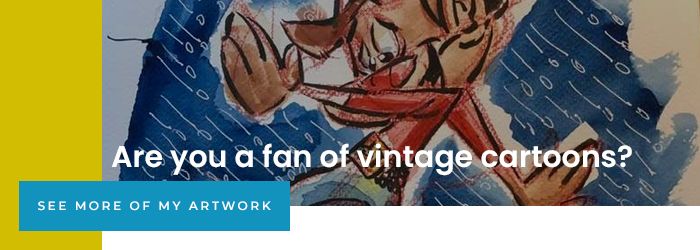Guide to Becoming a Professional Cartoon Animator like Tim Walker

Become a Professional Animator
What Does a Career in Animation Look Like?
Tim Walker is a professional animator who has been working on popular shows like Samurai Jack, Batman, and Darkwing Duck for decades. It’s safe to say that Tim knows a thing or two about what it takes to succeed as a professional animator. This page goes over some tips for success and, even more importantly, covers the common reasons why people fail. Read on for answers to all your questions!
In the meantime, check some of Tim Walker’s custom cartoons for inspiration!
How to Become a Professional Animator
Animation is one of the few careers where you can apply skill in artistic creation with specialized professional abilities. Yet, it is very different today from what it was in the past. For one thing, most animators in the past were hired to draw cel animation, filling in the artwork for a feature-length film or short. Today, filling in cels generally only occurs during the planning stages of the animation process, with computer software doing the bulk of that work. Computers are used to create shadows, dissolves, and however much more the lead animators, studio, and other decision makers have chosen. Whereas in the past, every frame was required to be drawn by hand, today entire films can be created in computers.
The technological changes as well as the competitiveness of the career path have led to some of the most significant changes in the hiring process. Nowadays, animation studios looking to hire will want animators with plenty of digital art, video game design, and other computer software experience as a baseline. Most animation degrees will train you to learn the software and challenge you to keep growing as an artist.
Many places are looking for young talent; you don’t have to have gone to the best possible animation schools to get hired. There is no golden ticket to becoming a professional animator.
The Career Path
Getting started, a bachelor’s degree in drawing, animation, or something similar is a good place to build a foundation. After that, you’re going to want to focus as much as possible developing your skills and building some work experience — perhaps with freelance, job shadowing, volunteering, etc. Unfortunately, there’s no guarantee that you’ll succeed here. It’s a very competitive career path that requires very hard work. While being an animator is a lot of fun, even just breaking into the business can take years and can be a lot of pressure. The most important thing is to stay determined and don’t get discouraged. Keep fighting and don’t give up.
Focusing on the fundamental things you do have control over is your best bet here. That means:
Keep improving your drawing skills
Practice using animation software regularly, that’s in-demand
Develop a strong portfolio and showreel
Work on your personal projects when you have the time
Build your portfolio by taking on low paid, freelance work
Proactively reach out to studios, video production companies, and other similar potential employers. You don’t have to start out in your dream position; getting your foot in the door and having some professional experience will help distinguish you from other jobseekers in the future
Keep an eye out for junior animator recruitment listings
Stay enthusiastic and eventually you’ll carve out a place for yourself. Keep reminding yourself of why you’re passionate and why you chose this career in the first place.
Don’t give up!
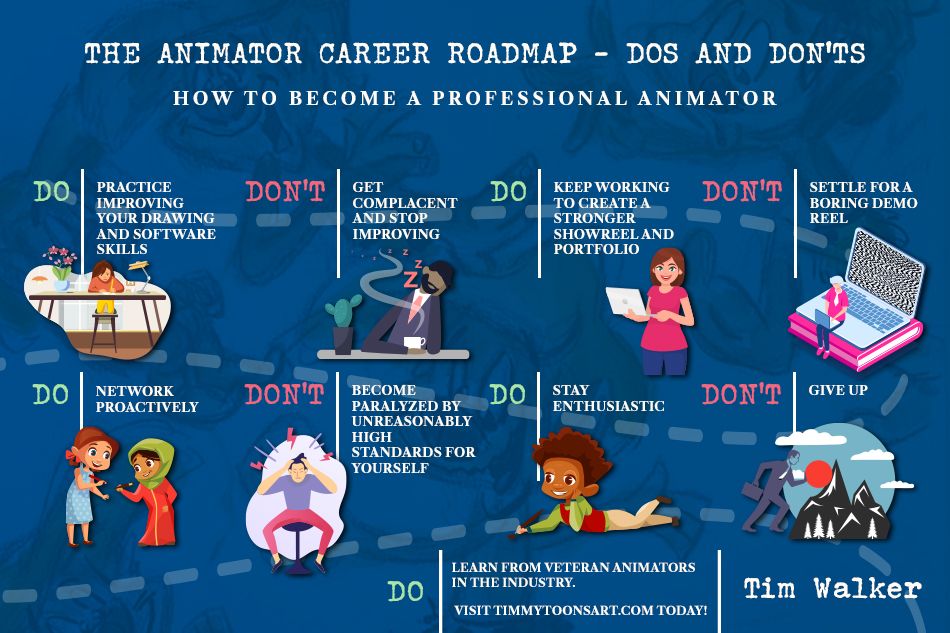
Common Reasons For Failure
Despite the number of people pursuing a career as animators, not everyone succeeds. Sometimes it’s down to just bad luck, but usually there are some reasons within a person’s control that contribute to their failure as well. Those include:
#1: Refusal to Improve
If you struggle drawing facial animations, walls, eye lines, or any other area of animation, that’s a liability and weakness that you can fix. Focusing on improving one area at a time can get you to a level where you are actually skilled enough to stand out from other potential hires. Keep studying, listen to lectures by professionals, study excellent animation segments, and experiment with a wide variety of approaches. You never know what will come in handy down the road.
#2: Failure to Network
You can be a phenomenal artist, but that doesn’t mean you’d make a good animator. If you don’t have good networking skills, you’d probably be better off doing art quietly at home, not professionally as an animator. Getting an in, where people know you, is always going to be an advantage in any career. Think about it from the perspective of someone doing the hiring: would you be more likely hire a complete stranger or a friend from animation school who you know you get along with? The answer is obvious.
Building connections doesn’t mean you go around kissing asses though; that’s a dumb idea. Instead, focus on what you provide others. Be friendly, supportive, and helpful, and people will be the same back to you.
#3: You Believe You Are a Perfectionist
It’s great to have high goals and standards, but when you see yourself as a perfectionist, more times than not, what you really are is a procrastinator. When every project you’re working on feels like do or die, it can cause you to overvalue it and ruin your ability to get it done reasonably. The mindset often goes like this:
A young animator wants everything they produce to be perfect and extremely unique.
With such high standards, coupled with a skillset that isn’t compatible with such beliefs of excellence, the bar is set too high and work becomes painful and paralyzing.
Do you see how perfectionism and procrastination are siblings now? If you find yourself in this situation, having thoughts like “What if I waste years and don’t land my dream job?” or “What if I screw up on these body mechanics?”, you’ll find yourself in the same situation many young animators trap themselves in — procrastination, depression, and laziness.
It’s somewhat paradoxical, no? You want to be so perfect that you end up not putting in the effort and actually going through with the learning process. There is a definite fear there, which can ruin you.
Instead of letting the fear paralyze you, consider the idea of failing forward.
Failing forward means you go into a new project expecting yourself to make mistakes. Being excited and willing to learn from those mistakes will help you become the exceptional animator that you’re aiming to become. The process of exploration and experimentation is antagonistically opposed to perfectionism.
#4: Your Demo Reel is a SnoozeFest
Your demo reel may be cool in context, but consider this: the people who you are showing it to who aren’t your family or friends and who are hiring for a position are seeing probably hundreds of these for each position. Will your art leave an impression and inspire them to reach out to you to learn more, or will it confirm for them that you are not right for the position? All it really takes is one really good animation to inspire hiring directors to choose you. Quality far exceeds quantity. You want your one masterpiece shot paired together with your second and third best work.
#5: You Went to the Wrong School
By this time in your career, you have probably learned something you should have known years ago:
Going to college in no way guarantees a job.
Degrees from expensive, prestigious schools also don’t make as big of a difference as you think.
If you’ve done these things, that’s great — it probably wasn’t a waste of time. But it’s not enough on it’s own. After you finish your studies there, in reflection you may realize:
You still suck as CG
Your demo reel is weaker than other students’
You gained to industry connections
Obviously, this is the opposite of the result you want to. Well, it might be time to go back and do some more studying. Great online animation schools abound, where you can go back and more seriously focus on your weaknesses and mastering the most useful skillsets for a professional career. Finding schools with artists also currently employed by your favorite studios is a smart move as well.
The Best Time To Get Started Was Yesterday…
The second best time to take more serious action is today. Whatever is holding you back, whether that’s procrastination or a boring demo reel, now’s the time to focus your time and effort towards improving that. There are no guarantees that you will be successful and make animation your career. However, as Walt Disney once said, “The Way to get started is to quit talking and begin doing.”
About Tim: Tim Walker is an old-school cartoonist and animator from Warner Bros. who worked as an animator for The Flintstones, Batman, Samurai Jack, and many other cartoons. Check out some of his artwork on this website!
